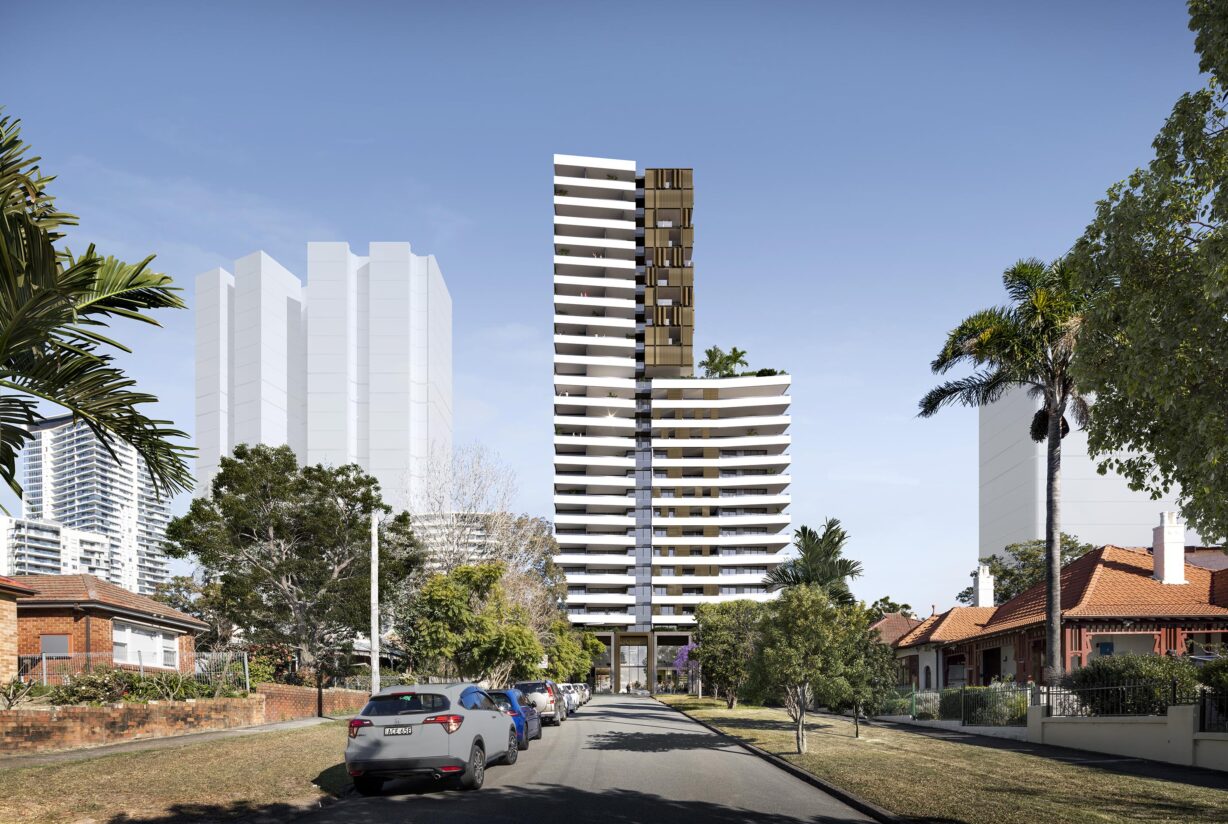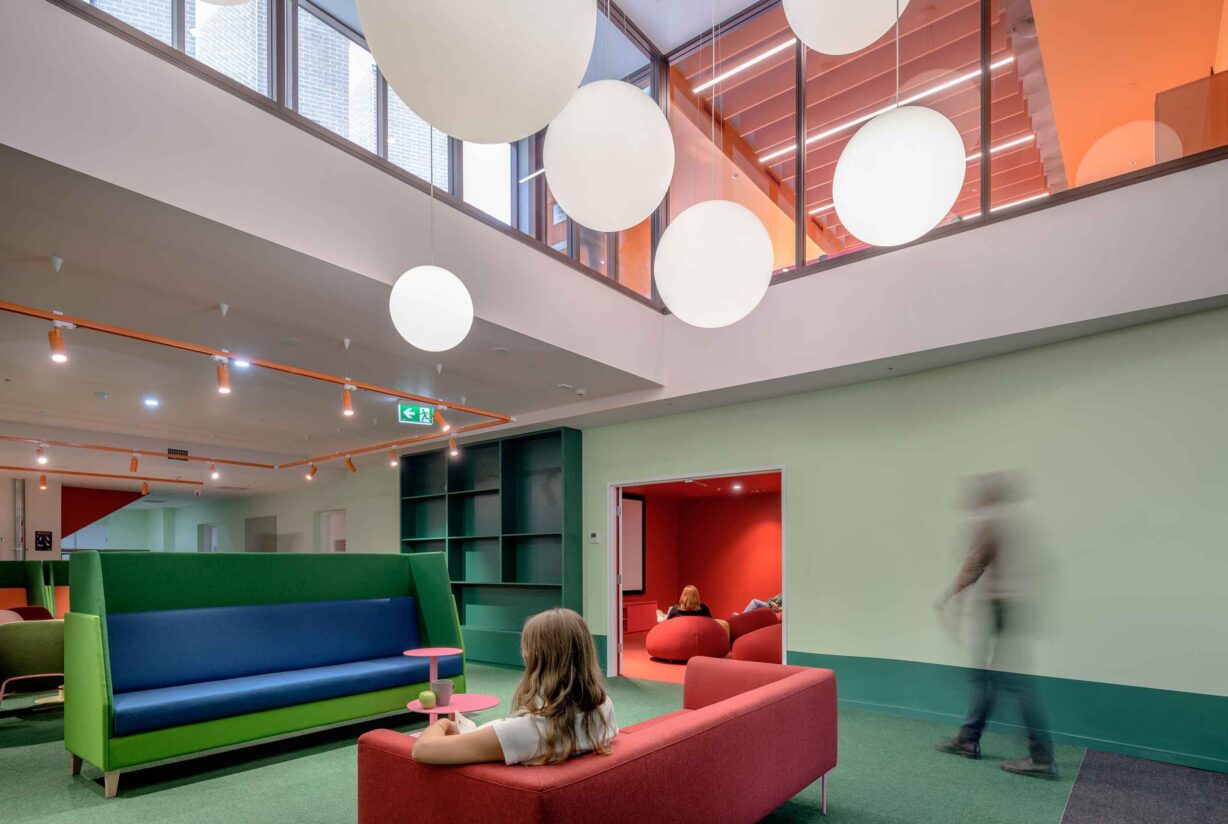

Build it and they will come
March 2023 | By Brian Mariotti, Director
There's great social and sustainable design potential in Build-to-Rent multi-residential housing, says AJC Director, Brian Mariotti. Merging architecture and technology is key, along with a focus on sustainability and community.
Around 30 percent of Australians today are living in long-term rental accommodation, increasingly as a lifestyle choice, rather than a compromise. This pivot towards home rental reflects a broader shift in attitudes around asset ownership in general. One urban example is the technology-enabled car-sharing platform, GoGet where the emphasis (and value) is on service and convenience of a car only when you need it, rather than car ownership.
While 30 percent renting is a significant proportion of the population, it’s still far less than in many developed countries in Europe and Asia. Switzerland leads the world in home rental with around 57 percent of its population renting. In Germany it’s around 48 percent, South Korea around 45 percent and Hong Kong around 49 percent¹.
With renters on the rise, leading developers like Mirvac, Grocon and Frasers are catching the wave by investing in new Build-to-Rent (BTR) projects. Governments too are looking to remove regulatory and tax road-blocks, and the finance industry is getting creative with funding new BTR projects. All of this is welcome news, not just as a post-COVID stimulus to the property and construction industries, but as a new model of urban living that has the potential, if done well, to bring significant social and even environmental benefits.
The ABCs of BTR
Build-to-rent (BTR) housing differs from conventional housing developments in some key ways. It’s large-scale, high-density purpose-built rental housing that is held in single ownership and professionally managed and maintained. It is usually well-located on or near a transport hub, employment opportunities, retail and commercial services and culture. It is generally funded by large-scale institutional investors who will hold and manage the asset for many years.
Big-picture benefits
- Attracting institutional investment for a more stable housing supply through the property cycle,
- Better security of tenure for tenants as owners have a strong incentive to offer long-term leases,
- More housing choices for tenants in well serviced locations.
Benefits to renters
Research in Australia shows that many renters can afford to buy, but choose not to, opting instead to rent a home in a desirable location near transport hubs, work options and cultural amenities. They are happy to forego the expense and hassle of property maintenance in exchange for the convenience of a managed property. This demographic also tends to be younger and more mobile in their lifestyles.
Research from the more mature BTR markets of the US and UK shows that key incentives to renters include:
- Proximity to work – a maximum 30-minute commute,
- Amenities – ideally in a mixed-use project with shopping, entertainment, services at the doorstep,
- Instant gratification – services, home automation and maintenance provided,
- Flexibility of tenure – older residents typically want longer terms, younger prefer shorter.
Business disruptors have dominated their industries by transforming the way people engage with them, offering a radical new level of technology-enabled service.
Game-changing service
Overwhelmingly the BTR emphasis is on service, mobility and personal autonomy for renters, as well as a well maintained home. Business disruptors like Uber and WeWork have dominated their respective markets, not by inventing completely new offerings (an Uber is just a taxi; We-Work is just a shared office space). They’ve done it by transforming the way people engage with them, offering a radical new level of technology-enabled service that puts consumers in the driver’s seat.
Different DNA
It’s not simply a matter of flipping unsold apartments into rentals, only to sell when the market picks up. BTRs offer:
- Reduced capex. Because BTR projects are a long-term asset, the build quality must be high to minimise maintenance costs and disruptions to rental income, as well attracting good tenants.
- Help at hand. Some BTR projects have an app-based interface for easy booking and maintenance requests, and a resident ecosystem for networking and social events. The NSW Housing Diversity SEPP will likely recommend one full-time on-site staff member for every 50-75 BTR apartments.
- A real home. Security of tenure and freedom to hang pictures, paint, have pets etc (unlike many strata schemes).
- Add-in services. Partnerships with local restaurants food delivery, child care, pet care, dry cleaners etc, that activate buildings and enhance lifestyle.
- Sustainability. BTR could lead sustainable design, because returns on the infrastructure investment are higher over the longer term.
- Building signatures. Successful BTR projects overseas have an X-factor that attracts residents. ‘Liv’ in London’s North Acton has fully equipped, acoustically shielded rehearsal rooms, while ‘Ollie’ in Pittsburgh, US, offers a package of tableware, crockery and linen to complement the interior design.
Individual identity
In the US, Western Europe, and increasingly the UK, there are real points of difference emerging among BTR developments, designed to attract residents looking for specific amenities, identity, community. Like the business disruptors, it’s about identifying a niche or need in the market and catering to it creatively.
How do you start a garage band when you don’t have a garage?
For instance: How do you start a garage band when you don’t have a garage? How can you pull an all-night rehearsal session in an apartment building and stay on good terms with your neighbours above, below and on either side of you? Music lovers would find themselves right at home at ‘Liv’ in London’s North Acton, which has fully kitted out, acoustically shielded rehearsal rooms.
Pet owners are being seduced by BTR properties offering purpose-designed features and services like dog runs, dog walking and pet grooming services, even specially built pet toilets – so they may no longer be at the mercy of individual strata committees or draconian rental rules.
Style mavens who love the luxury of holistic interior design, can pack light when they move in to the Ollie development in Pittsburgh, US, which offers an optional package of coordinated designer tableware, crockery and linen to complement the interior design.
All about amenities
Technology and home automation offer the possibility for movable building elements, flexible spaces, keyless access and concierge services. Many of these amenities and inclusions already appear in thoughtfully designed build-to-sell developments, such as Parramatta’s V by Crown in Sydney’s West.
This 30-storey, mixed-use village of 585 apartments offers resort-style resident social spaces including a rooftop pool, spa and sauna, a library, commercial kitchen and bookable function room. A neighbourhood in a building.
Buildings that go well beyond BASIX for sustainable design are already proving popular in hybrid and build-to-sell developments.
As well as amenities, carbon footprints are a consideration, and buildings that go well beyond BASIX for sustainable design are already proving popular in hybrid and build-to-sell developments. The Burcham in Rosebury NSW offers a blueprint for integrating technology, sustainability and community in the thoughtful adaptation of a 100 year-old factory and addition of two new buildings.
All 99 apartments are all enabled with fingerprint ID and remote app access to intercom and door release, plus voice operation of interior lights, blinds, AV etc. Community features include shared kitchen gardens, pet-play lawns, a rooftop lounge and cinema.
Sustainability is a big drawcard too. Along with passive sustainable design and EV charging stations, The Burcham boasts its own embedded power grid (Burcham Energy) fed by the sun, reducing residents’ power bills and environmental impact.
Better for the environment
Early signs are optimistic that the BTR model could lead the sustainable design charge at scale, because returns on the investment in infrastructure make economic sense over the longer term.
In August 2020 Mirvac completed Indigo at Sydney Olympic Park. It’s the seed project for Mirvac’s Build to Rent Club (launched in 2018) in partnership with the Clean Energy Finance Corporation, and an important early example in a sector with at least a dozen new large-scale projects in the pipeline.
The CEFC’s investment is to help achieve an anticipated 40 percent or more reduction in greenhouse gas emissions over a typical apartment building, and giving tenants the same access to clean energy technologies as home owners, according to Ian Learmonth, CEO of the CEFC:
It’s about delivering energy-efficient buildings that have long-term environmental benefits.
“With almost one-third of Australians now in the long-term residential rental market, it’s critical that developers and owners incorporate innovative sustainable design measures from the early planning stage. It’s about delivering energy-efficient buildings that have long-term environmental benefits.”
In October 2020, Fraser’s Property announced its new BTR project for Brisbane’s Fortitude Valley: 354 apartments of which 144 (40 percent) will receive a rental subsidy from the Queensland Government to provide affordable key-worker housing in the city.
The development will be built to a high standard and rich in resident amenities, including a work-from-home co-working office over four floors. Importantly, it’s targeting a 5 Star Green Star Design & As Built rating from the Green Building Council of Australia, and plans to operate as a carbon neutral building once completed.
Portable lifestyle
So, what if you could wrap up all these great ideas into a nation-wide portfolio of BTR properties by the one quality developer. All built to the same high standards, but perhaps focusing on different amenities (furnished, unfurnished, recording studio, pet lawns etc)?
Say you were living and renting in Sydney, and landed a job in Adelaide, you could transfer your Sydney lease to one of their Adelaide properties, without the hassle and extra expense of ending one lease and entering into another.
So the promise (of somewhere comparable and convenient to live) becomes portable. Which addresses one of the most annoying things about renting — the time and money spent in searching for a place to live.
The patterns of people coming and going in delivering services throughout the day throws up opportunities for unscripted interactions close to home.
People friendly
Early planning is key for great BTR outcomes, and the community benefit of a well conceived, well designed and built project can’t be overstated. With new studies pointing to increased social isolation (around 1 in 4 Australians feel lonely and around 30 percent of young Australians say they don’t feel part of a group²) there are some obvious benefits to activating BTR buildings with services and social / communal amenities.
It’s not always about whether or not you might use all the services on offer, but the patterns of people coming and going in delivering services throughout the day throws up opportunities for unscripted interactions close to home.
This is even more purposeful in new student accommodation projects like Urbanest in Darling Square, Sydney, where great student amenities and social spaces have the [added ‘care factor’ of a concierge — that familiar face at the front desk who remembers you.
Encouragingly, The NSW Housing Diversity SEPP looks likely to recommend a full-time on-site staffer as a central liaison for residents. So in many ways, that very old New York institution of the Doorman, could be making a welcome comeback. A return to civility in the city.
Early signs suggest that BTR could lead sustainable design, because returns on the infrastructure investment are higher over the longer term.
AJC Director, Brian Mariotti




